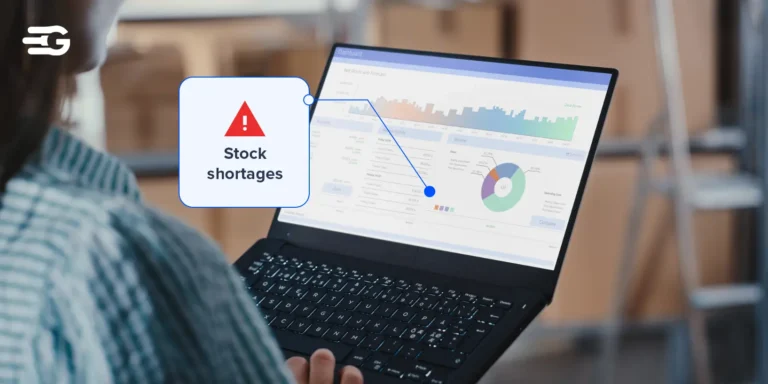Know the Bullwhip Effect and the ways to duck it
The history of the slave trade has the mention of a bullwhip. It was a tool for abuse and straight-line disobedience. While, since then it has been dreaded and inhumane and it is no less in the context of supply chains as well.
When a whip is cracked, a small wrist movement creates a much larger lash at the end. In the supply chain, this emerges as a small fluctuation in demand at the retail end gets magnified as it travels upstream toward manufacturers.
Now, what is this small fluctuation?
Frankly, it can be anything. A minor increase in sales at a retail store might lead them to significantly boost their inventory orders to wholesalers.
We have known bullwhip as a tool that infuses fear. Things are no different in the context of supply chain management, as several stakeholders tend to react impulsively leading to snowballing.
This snowball effect creates several problems:
- Excess inventory: Manufacturers end up holding onto more stock than they need, leading to storage costs and potential obsolescence.
- Production inefficiencies: Manufacturers might overproduce or underproduce due to inaccurate demand forecasts.
- Lost sales: Stockouts can occur if retailers underestimate demand, leading to lost sales and customer dissatisfaction.
Effective supply chain management hinges on accurate forecasting. The bullwhip effect highlights the importance of information sharing and collaboration between all parties in the chain.
Understood that Bullwhip literally hits hard on the supply chain operations.
But what causes it?
Demand Forecasting Errors
Inaccurate demand forecasts are the root cause of many bullwhip issues. Retailers might overreact to minor sales fluctuations, placing inflated orders to avoid stockouts. Wholesalers and manufacturers, lacking complete sales data, see these spikes and magnify them further in their forecasts.
This domino effect creates a distorted picture of true demand, leading to overproduction or underproduction at the manufacturing level.
Order Batching
To minimize ordering costs, companies might group orders into large batches. This practice smooths out fluctuations for the company placing the order, but it obscures actual demand patterns.
Suppliers see these large, infrequent orders and struggle to predict true consumption. This lack of visibility can lead to overproduction during peak periods and stockouts during valleys in demand.
Price Fluctuations
Price fluctuations and promotions can wreak havoc on demand forecasting affecting the overall operational efficiency. When retailers anticipate price hikes, they might stockpile inventory, leading to a surge in orders upstream.
Conversely, sudden price drops can trigger a buying frenzy, followed by a period of low demand as consumers have already fulfilled their needs. These price-driven fluctuations make it difficult for suppliers to predict actual consumption patterns.
Rationing and Shortage Gaming
When faced with potential shortages, some retailers might engage in “shortage gaming.” They anticipate future scarcity and inflate their orders to secure enough stock. This behavior creates artificial demand signals that travel upstream, causing manufacturers to overproduce.
Once the perceived shortage subsides, retailers might reduce orders drastically, leading to a sudden drop in demand for manufacturers who have already ramped up production. This cycle of overcompensation and undercompensation fuels the bullwhip effect.
Given the causes of Bullwhip, are there any far-reaching effects of it?
The bullwhip effect’s deceptive demand signals wreak havoc on supply chains, leading to a cascade of negative consequences:
Increased Inventory Costs
The bullwhip effect’s distorted demand signals often lead to overproduction. Manufacturers holding excessive inventory incur significant costs for warehousing, storage, and potential obsolescence. Additionally, retailers might hold more safety stock than necessary due to the fear of stockouts, further increasing inventory carrying costs.
Reduced Customer Service Levels
The bullwhip effect can significantly impact customer satisfaction and service levels. Stockouts occur when inaccurate forecasts lead to underproduction or under-ordering. This leaves customers frustrated and potentially looking elsewhere for reliable suppliers. The bullwhip effect can also disrupt lead times, causing delays in order fulfillment and frustrating customers who expect prompt deliveries.
Operational Inefficiencies
The bullwhip effect creates a ripple effect of inefficiencies throughout the supply chain. Unpredictable demand fluctuations make production planning difficult. Manufacturers might resort to frequent production adjustments, leading to inefficiencies such as idle time, overtime, and increased setup costs.
Furthermore, the bullwhip effect can disrupt transportation schedules and create logistical headaches, further adding to operational costs.
Having acclimatized to the potential damages that the Bullwhip effect can have, what are the strategies to mitigate it?
The bullwhip effect isn’t an inevitable consequence of supply chains. By implementing proactive strategies, companies can significantly reduce its impact and create a more efficient, responsive system.
Here are some key approaches:
Improving Demand Forecasting Accuracy
By analyzing historical trends, seasonal variations, and external influences like economic conditions, companies can build robust forecasting models. Additionally, incorporating data from promotions, marketing, social media, and even weather can provide a more holistic view of demand.
Furthermore, advanced analytics like machine learning can uncover hidden patterns in vast datasets, and collaboration with retailers can ensure forecasts reflect real-time trends across the entire supply chain. This multifaceted approach leads to a more comprehensive understanding of future demand.
Implementing Continuous Replenishment Programs
Continuous Replenishment Programs (CRP) streamline inventory management through automated systems like vendor-managed inventory (VMI) or collaborative planning, forecasting, and replenishment (CPFR). This eliminates the bullwhip effect by replacing large, infrequent orders with frequent, smaller ones based on real-time consumption data.
By automatically replenishing stock based on pre-defined parameters, CRP ensures retailers maintain optimal inventory levels, avoiding both stockouts and overstocking. The real-time data sharing inherent in CRP also improves demand visibility, allowing for quicker adjustments to production plans.
Strengthening Supplier Collaboration
Sharing real-time data on sales, inventory, and production forecasts allows everyone to plan better and reduces information gaps. Regular communication with suppliers about their capabilities and lead times keeps things transparent and avoids surprises.
Leveraging Technology and Data Analytics
Advanced technology and data analytics play a crucial role in mitigating the bullwhip effect. Cloud platforms share data seamlessly across the supply chain. Predictive analytics anticipate demand shifts and disruptions. Blockchain’s smart contracts ensure a secure, transparent information flow and automate actions based on set rules.
How GoComet’s Solutions Help Mitigate the Bullwhip Effect?
As discussed The bullwhip effect thrives on a lack of transparency and information distortion. GoComet’s suite of solutions directly addresses these issues by providing real-time visibility, insightful analytics, and improved supplier collaboration, empowering companies to make data-driven decisions and mitigate the bullwhip effect.
Real-Time Supply Chain Visibility
GoComet’s real-time tracking and visibility tools offer several advantages in managing supply chain variability. GoComet’s real-time tracking empowers you to manage supply chain variability. See exactly where shipments are, predict stock needs, and address disruptions before they snowball. This reduces stockouts and prevents panic buying. This proactive approach minimizes the bullwhip effect’s impact by preventing them from cascading upstream and causing overreactions.
Advanced Analytics and Reporting
GoComet’s analytics platform goes beyond simple data visualization. It provides actionable insights that help companies stabilize supply chain operations. By analyzing data, GoComet tackles three key areas: demand, inventory, and routes. GoComet identifies buying patterns to forecast accurately, optimize stock levels to avoid waste and ensure availability, and find the most efficient delivery routes to save costs and prevent delays. This comprehensive approach minimizes the bullwhip effect and keeps your supply chain running smoothly.
Enhanced Supplier Management
GoComet’s platform fosters better communication and collaboration with suppliers, a critical element in mitigating the bullwhip effect:
By implementing a central communication platform, retailers, distributors, and manufacturers can share real-time information, eliminating data silos and misinterpretations that lead to the bullwhip effect.
Collaborative forecasting through this platform allows suppliers to adjust production based on true demand data from retailers, preventing overproduction and distorted signals.
Additionally, establishing performance metrics for on-time delivery and forecast accuracy creates transparency and incentivizes suppliers to prioritize practices that minimize disruptions throughout the supply chain.
Achieving Supply Chain Stability with GoComet
The bullwhip effect’s distorted demand signals can wreak havoc on supply chains, leading to inefficiencies, lost sales, and frustrated customers. By proactively addressing these issues, companies can gain a significant competitive advantage.
GoComet’s solutions empower businesses to:
- Gain real-time visibility: Track inventory levels, monitor shipments, and identify potential disruptions before they escalate.
- Leverage data-driven insights: Utilize advanced analytics to optimize inventory, identify demand patterns, and make informed decisions.
- Strengthen supplier collaboration: Foster communication and transparency throughout the supply chain, ensuring everyone has access to the latest information.
By mitigating the bullwhip effect, GoComet helps companies achieve supply chain stability, reduce costs, and ultimately, deliver a superior customer experience. In today’s competitive landscape, a resilient and responsive supply chain is no longer a luxury – it’s a strategic necessity. GoComet equips businesses with the tools and insights they need to navigate the complexities of modern supply chains and achieve success.






